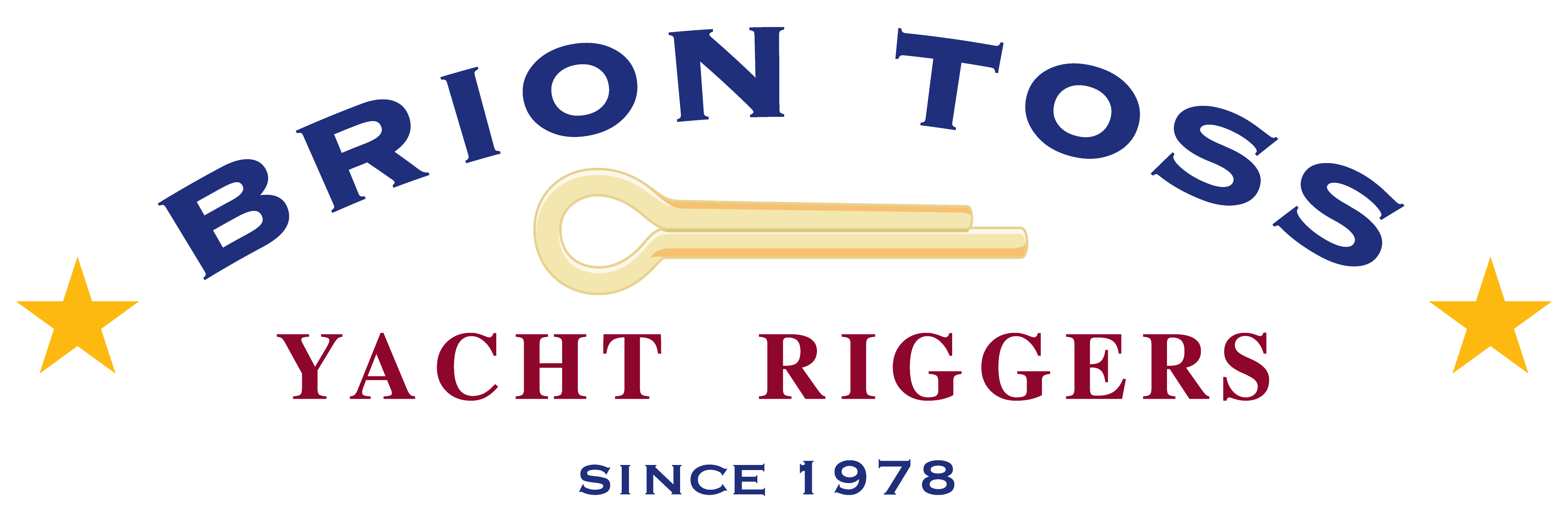Sweating the Fall Things, a Rigging Puzzle
Sailors and other rope users are familiar with the process of sweating or swigging up a line: pulling sharply sideways on the fall of a purchase, above the belay point to gain a bit of slack, then quickly transitioning to a downward resolution, so that slack can be taken up at the belay point. The combination of leverage and impact-loading allows you to get more tension than you could by simply pulling down on the line. But the question is: how much more?
In the video below our rigger Julia Briggs is sweating a line in our shop. The line has been set to a starting tension of 200lbs.
Julia weighs 140 lbs.
The line is attached to a load cell that has been set up to read the maximum tension achieved.
So here is the puzzle: how many additional pounds of tension did Julia impose?
Note that Julia makes no effort to take the slack towards the floor; we just wanted to see how much extra tension could be gained. If you have some idea about the result, send it to puzzle@briontoss.com, or write it in the comments section below. Anyone whose guess is within 150 pounds of the actual answer will win a free copy of my new book, Falling, a series of stories about working at heights. You get your choice of an ebook or audiobook version.
Puzzle entry deadline is noon Pacific time, January 5th, 2019, and the winners will be announced on January 7th. Good luck!





December 28, 2018 @ 1:20 pm
672lbs
December 28, 2018 @ 1:35 pm
820 pounds
December 28, 2018 @ 1:44 pm
420 lbs
December 28, 2018 @ 1:45 pm
I’ll hazard a bit of a guess.
120lbs x 11 for that load angle, = 1320lbs.
I’m assuming she’s capable of about her bodyweight (slightly under) in shock load in that situation, but I’ve never actually measured this in real life…
December 28, 2018 @ 2:00 pm
Shock loads are difficult to assess. Let’s assume that Julia is strong (she works for you as a rigger) and gets 75% of her body weight to be effective on the pull, or 105 lb. then the vector sum yields 225 lb…If she manages (thru shock loading) to get 100% of her body weight on the pull (although her feet never left the ground) , then the vector sum yields 244 lb. I’ll split the difference and say 235 lb
December 28, 2018 @ 2:37 pm
280 additional ft/lb. for the microsecond .
December 29, 2018 @ 12:03 pm
40 pounds
December 29, 2018 @ 12:09 pm
Sorry, I need to modify my entry of 40# because I didn’t run the video first and saw only the static image. Please put me down for 80 #.
December 31, 2018 @ 11:35 pm
Additional 60 pounds.
January 1, 2019 @ 12:19 am
312 lbs
January 2, 2019 @ 10:40 pm
Been a long time since I did vector stuff and dynamic is for me a wild card – but I will hazard 800 lbs tension on the load cell if it is fast enough reading but based on some calcs many years ago I think I am low –
January 4, 2019 @ 1:05 pm
401.8lbs
January 4, 2019 @ 1:09 pm
1012 lbs
January 4, 2019 @ 1:12 pm
670 pounds…
January 4, 2019 @ 2:26 pm
Assuming:
A. she generates 75% of her weight in shock load
B. Estimate that she generates a load angle of 160 degrees
C. approx. 300% multiplier
Answer: [200lbs initial + (75%of 140lbs or 105lbs)]*300% or 915lbs
January 4, 2019 @ 2:27 pm
…dang…less the original 200 thus 715lbs.
January 4, 2019 @ 7:25 pm
55lbs
January 4, 2019 @ 7:58 pm
800lbs
January 4, 2019 @ 11:05 pm
1000 pounds.
I’d say more but she didn’t move the iron thing on the floor. What is that?
January 6, 2019 @ 12:13 pm
750lbs
January 7, 2019 @ 3:23 am
350lb total, so the answer would be an additional 150lb
(Realizing I am late, so out of the contest, for the fun of it)
January 8, 2019 @ 12:19 am
1484
January 9, 2019 @ 2:27 pm
1052.7 pounds extra
I know too late.
So what is the answer?
January 9, 2019 @ 4:44 pm
Hi,
563 pounds, but I like your answer’s precision. You can see details here: http://briontoss.com/index.php/2019/01/07/sweating-the-fall-things-the-winners/
Regards,
Brion Toss